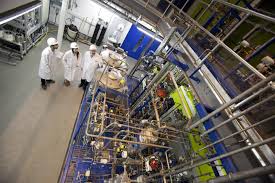-
Global CCS Institute report identifies need for 100-fold expansion in deployment by 2040, while costs are falling encouragingly
Date posted:
-
-
-
Post Author
Patrick LaveryCombustion Industry News Editor
-
-

The Global Carbon Capture and Storage Institute has released its ‘Global Status of CCS’ report for 2019. Though the tone of the report is upbeat, the information within it is mixed. Only two new facilities commenced operation in 2019, the major one being the Gorgon natural gas processing plant in Australia, but there was, however, a substantial increase in the total CO2 capture of all projects either planned or in operation globally. This amount is substantially below the amounts between 2010 and 2014, but a partial recovery has been made since the lowest point in 2017. Worldwide, around 38 Mt per annum is now the total installed capture and storage capacity, up from around 30 Mt per annum last year, and there are an interesting range of projects under development around the world. Still, the number of projects in the pipeline must be considered disappointing in relation to the pressing need to expand the industry to meet the goal of the Paris Agreement, as the report acknowledges – today’s 19 operational facilities must expand to more than 2000 by 2040, a more than 100-fold increase. According to the International Energy Agency, carbon capture, utilisation and storage is needed to reduce 9% of the cumulative emissions reduction between now and 2050 to meet the ‘sustainable development scenario’, which would be something around 2.5 Gt/year. Such a massive expansion will require strong policy support, which the Global Status of CCS report advocates for, through a combination of carbon taxes, tax credits or emissions credits, grants, and regulatory support, and support for research and development and for FEED studies is also important. The report also identifies a shift towards ‘cluster’ type projects, where transportation and storage infrastructure is shared between a number of industrial facilities capturing CO2, which will bring down overall costs per business. Indeed, costs per tonne of CO2 captured are falling, according to the GCCSI’s analysis (of a fairly small data set), from being in the region of US$80/tonne (in 2017 dollars) in 2011 to something more around US$60/tonne in 2019, and the expectation is that this will fall further to something around US$40/tonne by the mid-2020s. This will certainly make deployment more practical across the world, as will policy support, and one does get the sense from reading the report that with the necessary political will, CCS will be able to play its necessary role.
